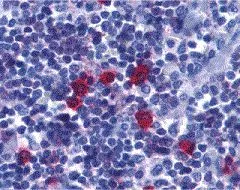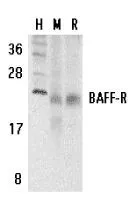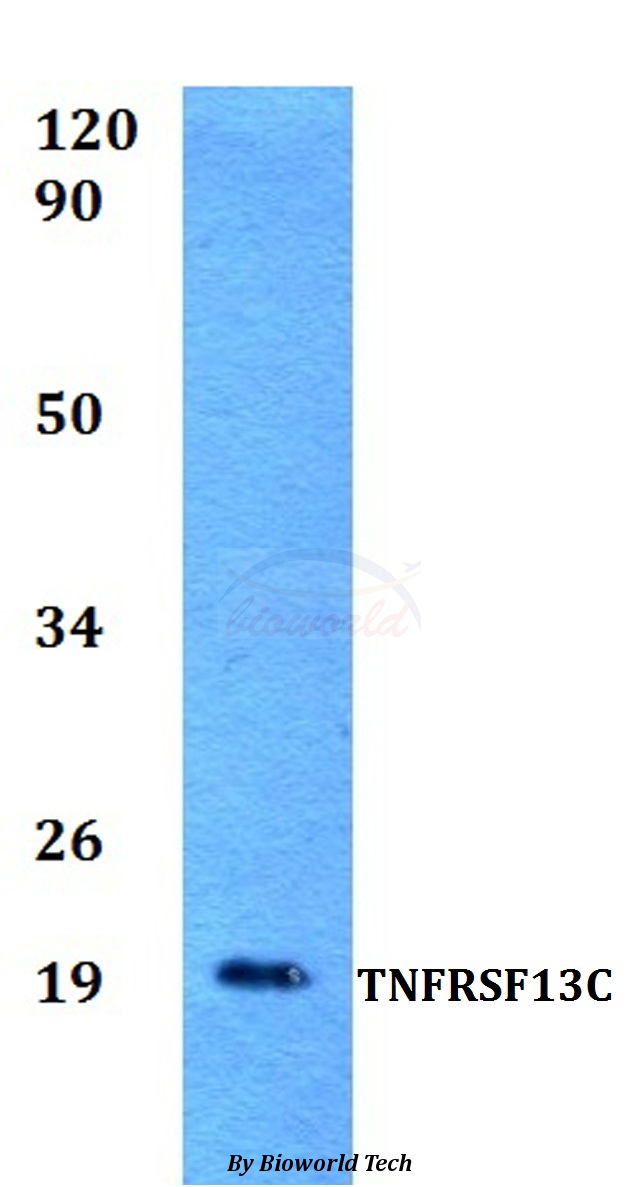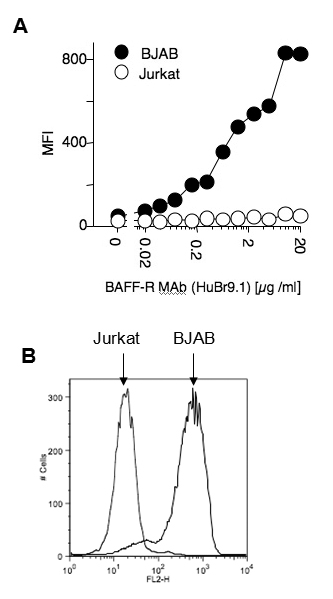
IHC analysis of human tonsil tissue using GTX31252 BAFF Receptor antibody.
BAFF Receptor antibody
GTX31252
ApplicationsWestern Blot, ImmunoHistoChemistry, ImmunoHistoChemistry Paraffin
Product group Antibodies
TargetTNFRSF13C
Overview
- SupplierGeneTex
- Product NameBAFF Receptor antibody
- Delivery Days Customer9
- Application Supplier NoteWB: 2-5microg/ml. *Optimal dilutions/concentrations should be determined by the researcher.Not tested in other applications.
- ApplicationsWestern Blot, ImmunoHistoChemistry, ImmunoHistoChemistry Paraffin
- CertificationResearch Use Only
- ClonalityPolyclonal
- Concentration1 mg/ml
- ConjugateUnconjugated
- Gene ID115650
- Target nameTNFRSF13C
- Target descriptionTNF receptor superfamily member 13C
- Target synonymsBAFF-R, BAFFR, BROMIX, CD268, CVID4, prolixin, tumor necrosis factor receptor superfamily member 13C, B cell-activating factor receptor, BAFF receptor, BLyS receptor 3
- HostRabbit
- IsotypeIgG
- Protein IDQ96RJ3
- Protein NameTumor necrosis factor receptor superfamily member 13C
- Scientific DescriptionB cell-activating factor (BAFF) enhances B-cell survival in vitro and is a regulator of the peripheral B-cell population. Overexpression of Baff in mice results in mature B-cell hyperplasia and symptoms of systemic lupus erythematosus (SLE). Also, some SLE patients have increased levels of BAFF in serum. Therefore, it has been proposed that abnormally high levels of BAFF may contribute to the pathogenesis of autoimmune diseases by enhancing the survival of autoreactive B cells. The protein encoded by this gene is a receptor for BAFF and is a type III transmembrane protein containing a single extracellular cysteine-rich domain. It is thought that this receptor is the principal receptor required for BAFF-mediated mature B-cell survival. [provided by RefSeq, Jul 2008]
- Storage Instruction-20°C or -80°C,2°C to 8°C
- UNSPSC12352203







